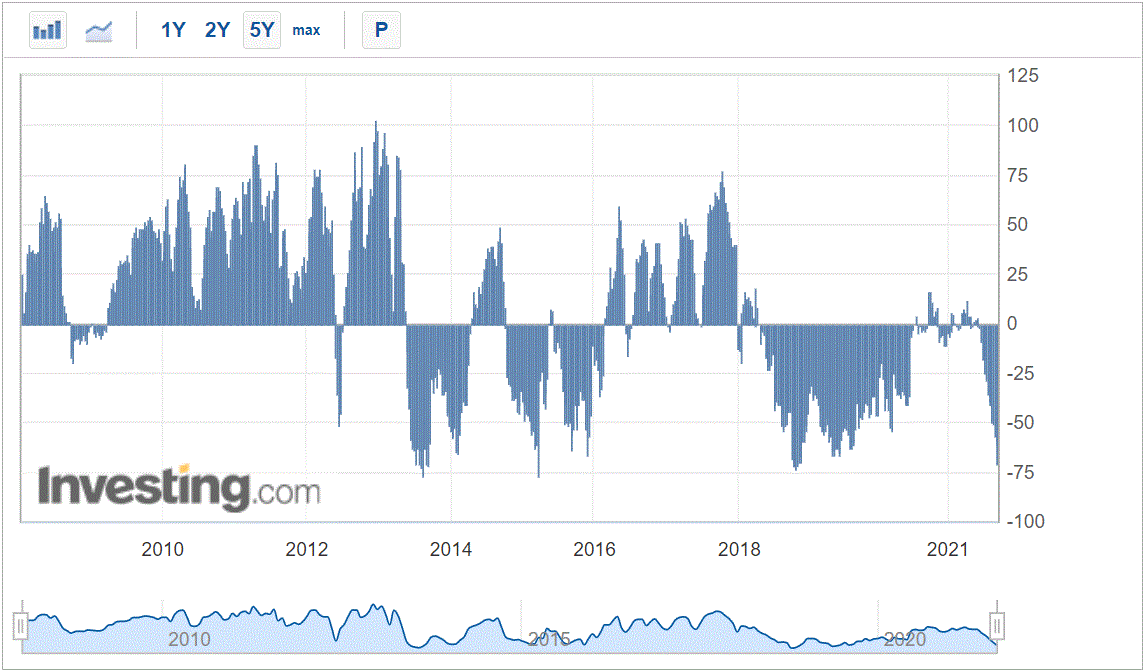The Australian dollar tried to rally Friday night but slammed back down as the Fed hinted that taper is go. That lifted DXY and EUR fell:
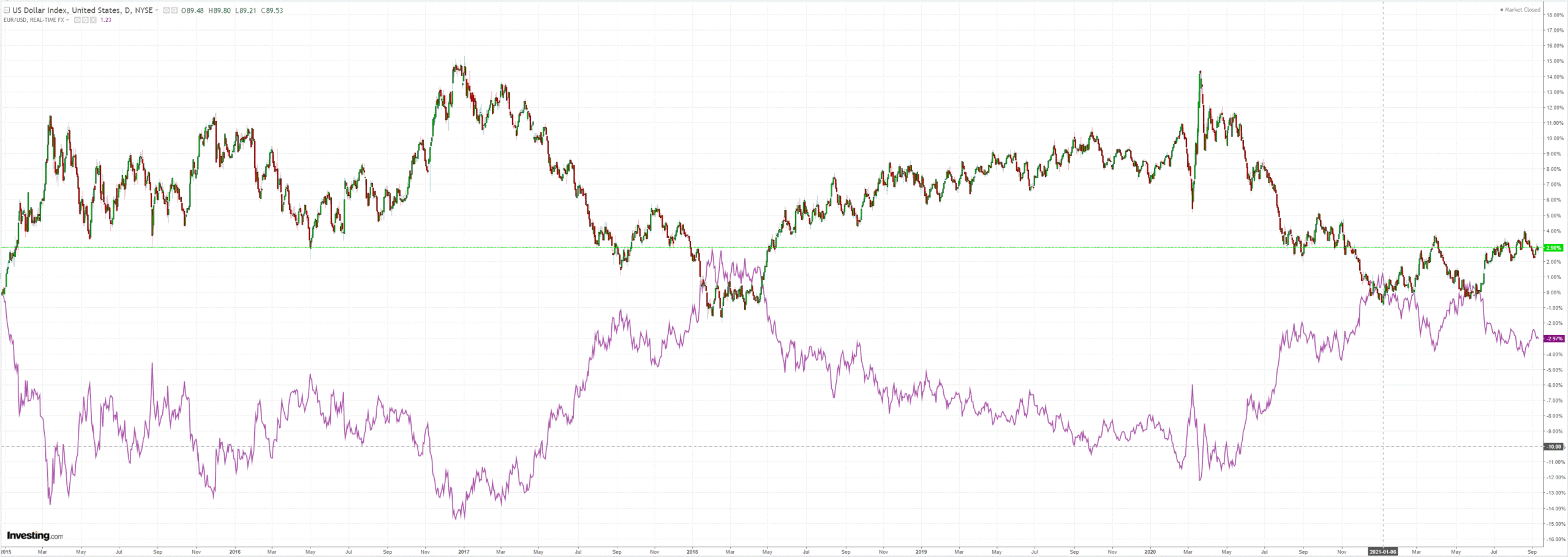
The Aussie popped and dropped:
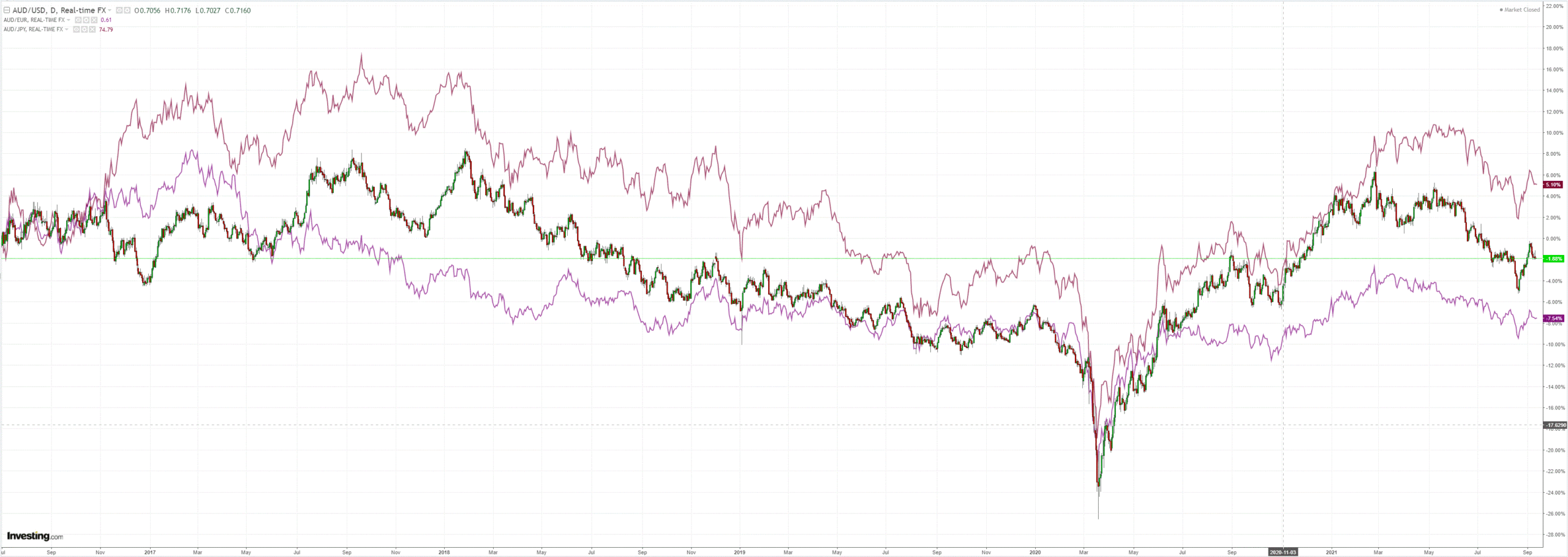
Gold sank but oil rose:
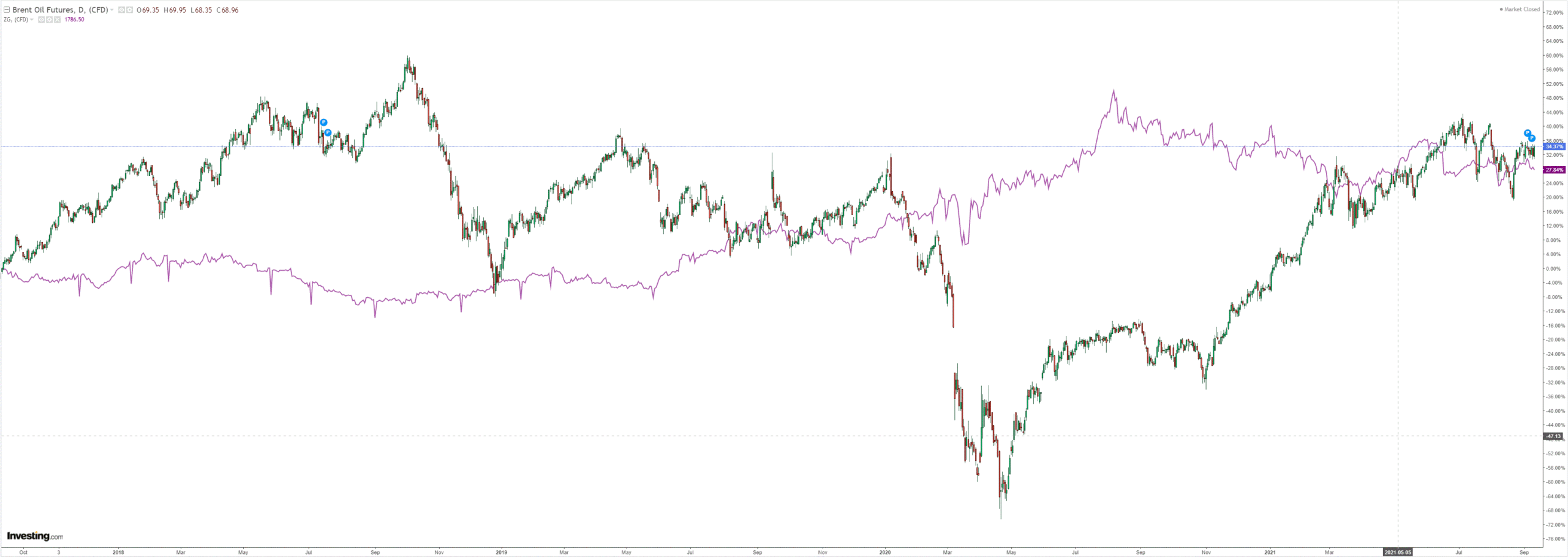
Base metals inhaled deeply on the crack pipe:
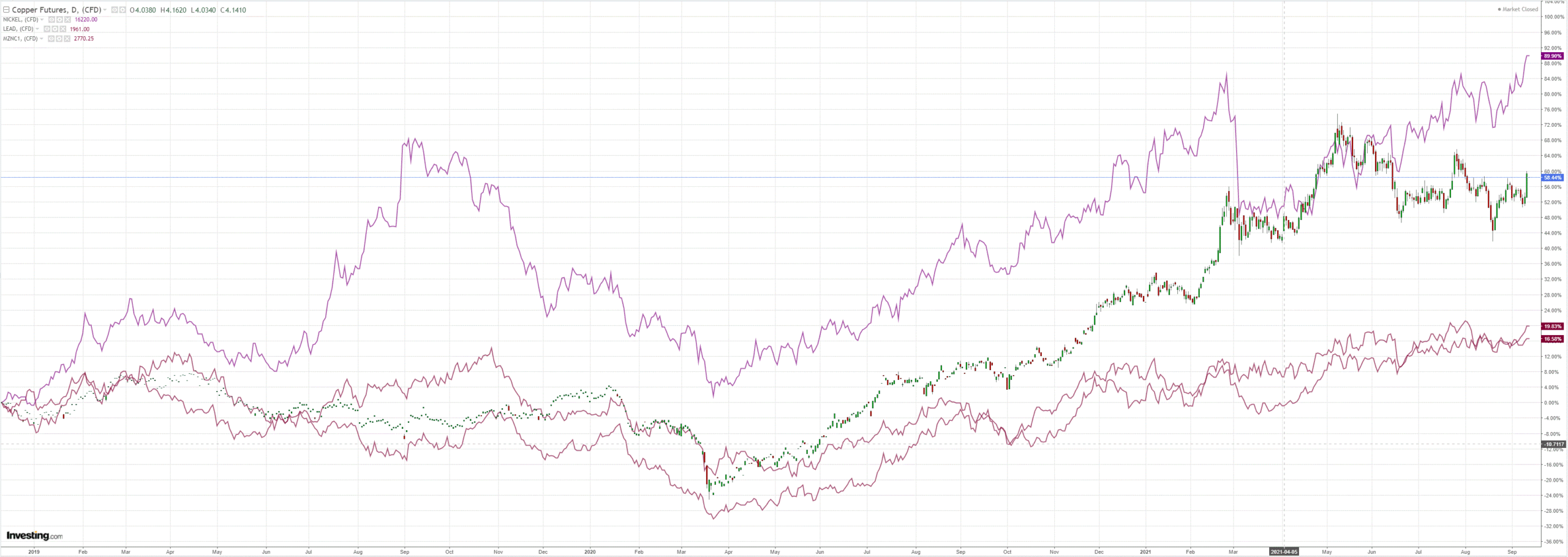
Miners not so much:
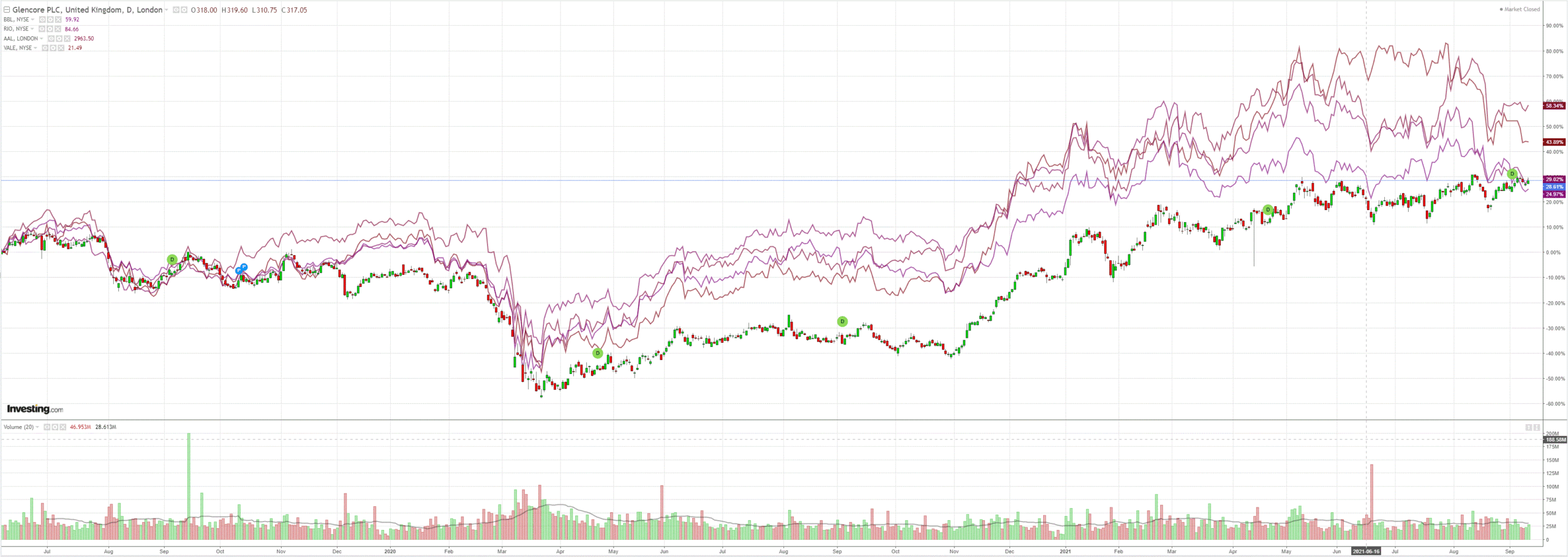
EM stocks still look very troubled:
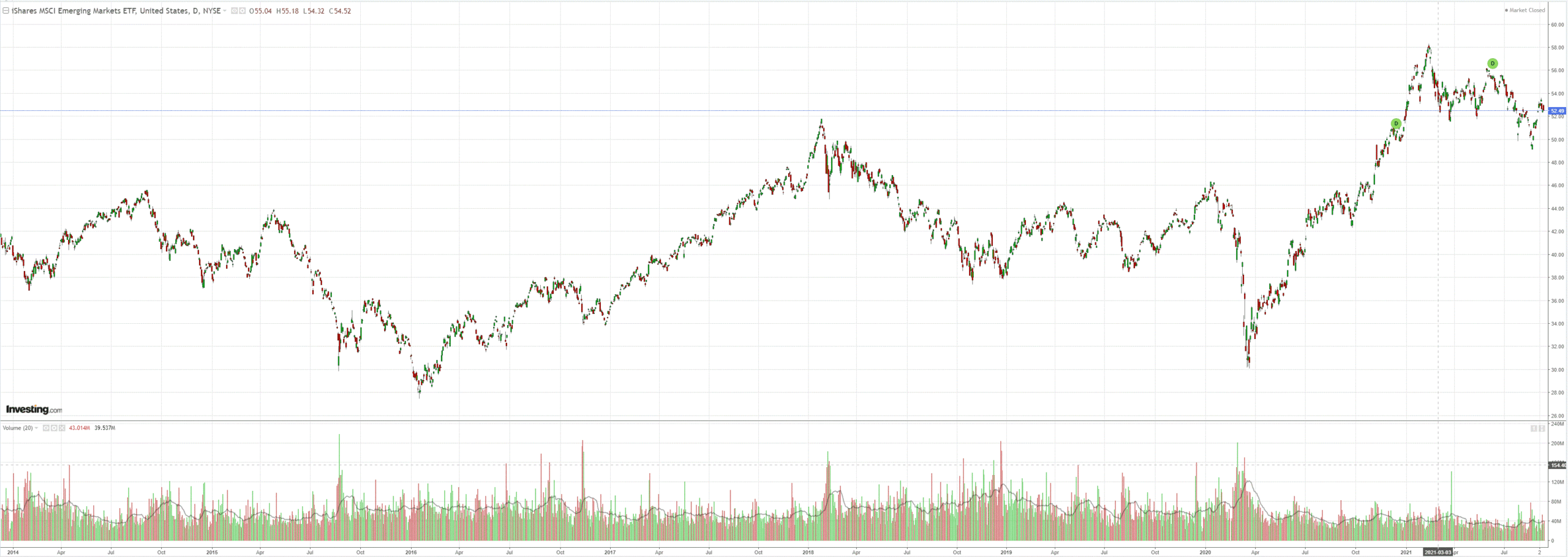
Through junk is only fading slowly:
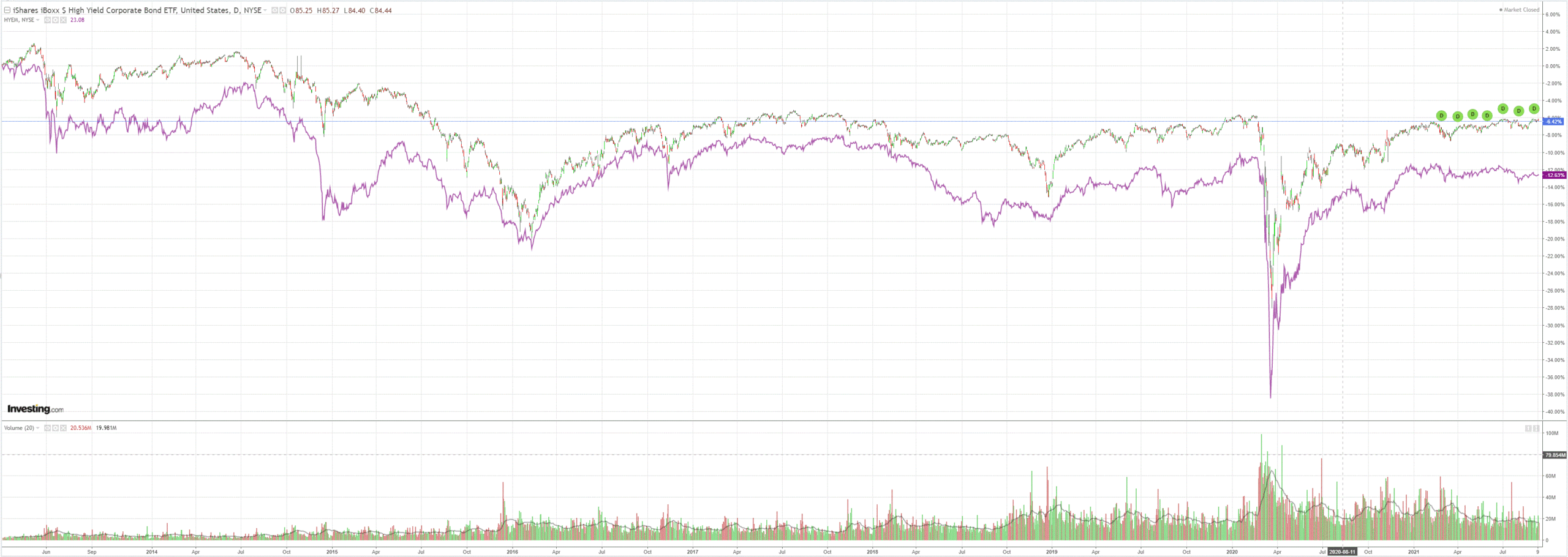
The curve steepened:
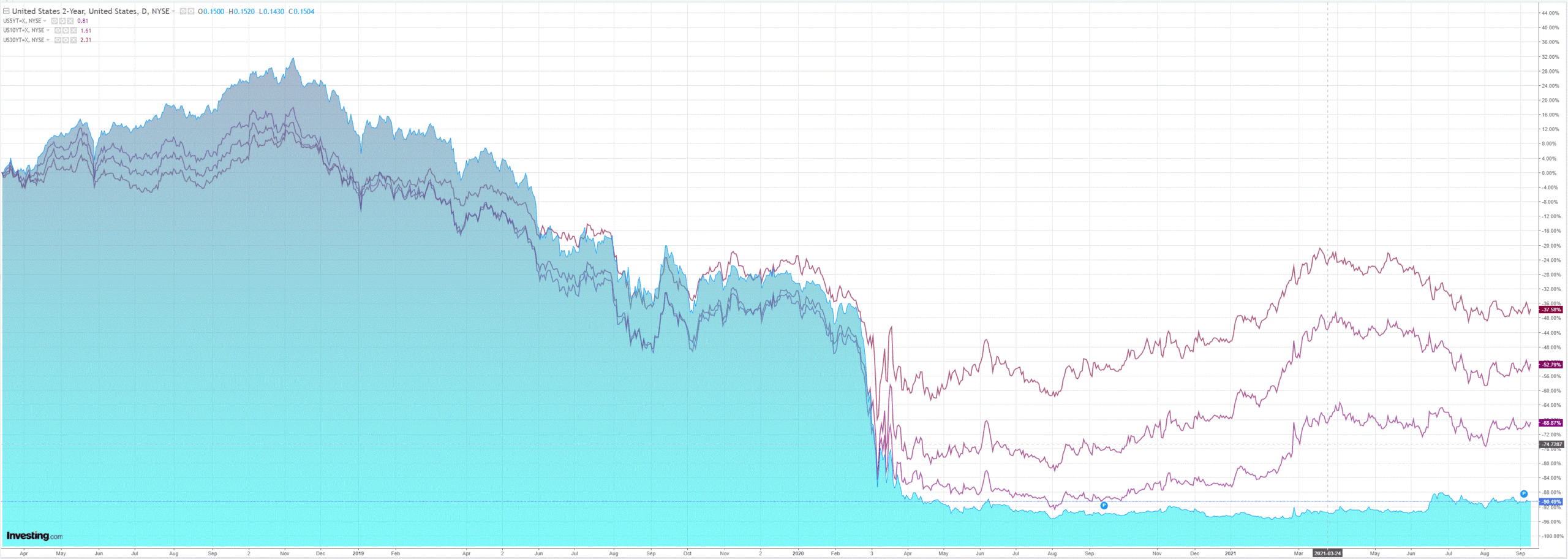
And Growth led stocks lower:
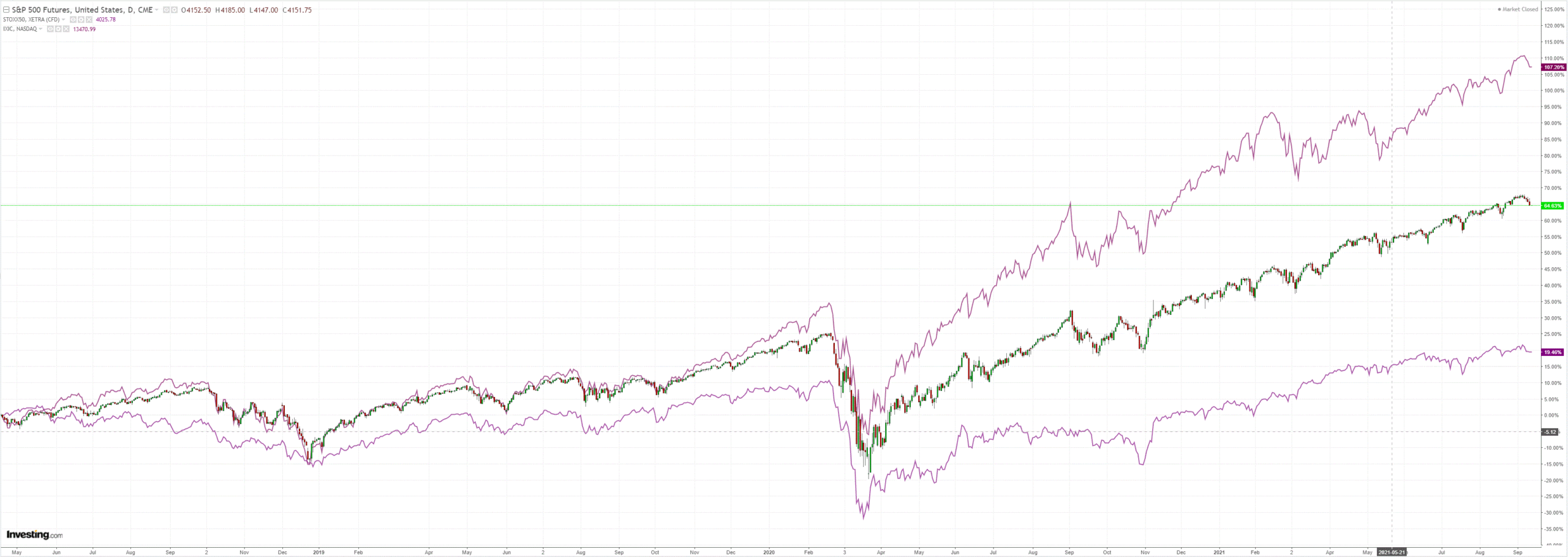
Westpac has the wrap:
Event Wrap
US PPI inflation in August beat expectations, at +0.7%m/m and +8.3%y/y (est. +0.6%m/m, +8.2%y/y). Ex-food and energy was +0.6% and +6.7%y/y (est. +0.6%, +6.6%). The annual rates are record highs. Post-pandemic demand and supply chain disruptions are helping lift prices.
FOMC member Mester said that there might be moderation in growth in H2’21, but that inflation pressures were more persistent than previously anticipated. She said that prices should move lower in 2022, but risks were to the upside.
Canada’s August labour report was strong, with employment rising +90.2k (est. 7.5k), and unemployment falling to 7.1% (est. 7.3%, prior 7.5%) as participation fell to 65.1% from 65.2% (est. 65.3%).
Several Eurozone national level industrial production releases for July proved to be mixed. Italy posted a stronger than expected gain of +0.9%m/m (est. -0.1%m/m), but Spain fell 1.1%m/m (est. +0.5%m/m), and France was close to estimates at +0.3%m/m with a solid manufacturing gain of +0.4%m/m (est. flat).
Although UK industrial production rose +1.2%m/m (est. +0.4%m/m), services and manufacturing were flat, and construction was weaker, causing monthly GDP to rise only a modest +0.1%m/m (est. +0.5%m/m).
Event Outlook
New Zealand: While buyer interest remains strong, August REINZ house sales are likely to be down sharply following the return to COVID-19 lockdown conditions midway through August. The price effect is expected to be muted. Westpac is forecasting a 0.2% gain for the August food price index with the gains spread across categories. Finally, September ANZ business confidence will provide a first gauge of business confidence since lockdown.
The event for the evening was the Fed releasing a piece in the WSJ. Goldman wraps it:
BOTTOM LINE: Following today’s Wall Street Journal article citing Federal Reserve officials preparing for a “November reduction,” we are increasing our subjective odds of a November taper announcement. We now see 70% odds of a November announcement (vs. 45% previously) and 10% odds of a December announcement (vs. 35% previously); we continue to see a 20% chance that growth risks related to the Delta variant delay the tapering announcement into 2022. The article also confirmed that a September taper announcement is “unlikely.” The article also referenced “plans taking shape” that involve a taper that could end in mid-2022. Accordingly, we believe a $15bn monthly pace of tapering that concludes next July is the most likely alternative to our standing forecast—of a $15bn per meeting pace that concludes next September.
Nothing has changed in my outlook. China has killed the global reflation with credit clamps. The Fed will cremate the corpse if it tapers. As a rising DXY and falling CNY hammers commodities and EMs, the main question is how far and how quickly does contagion have to spread before high yield debt and equities break down triggering a reversal in the Fed and China.
This is all immensely bearish for AUD.
Note, however, that the market is so one-sided in that view that we’re going to see a lot more of the volatility that we’ve seen in the past few weeks:
